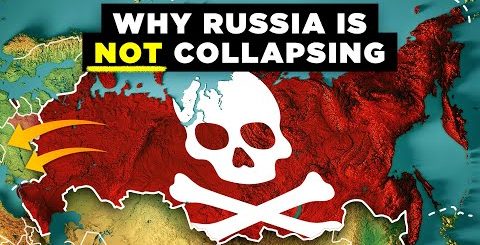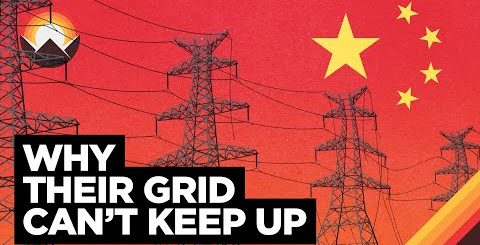What Happens If A Star Explodes Near The Earth?
People have witnessed supernovae for millennia, but what threat do they pose to life on Earth? This video is sponsored by Brilliant. You can get started for free, or the first 200 people to sign up via https://brilliant.org/veritasium get 20% off a yearly subscription.
▀▀▀
A massive thanks to Prof. Hans-Thomas Janka for helping us with the physics of supernovae and GRBs. A massive thanks to Prof. Brian Thomas for all of his help with the terrestrial effects of supernovae and GRBs. This video would not have been possible without them. Also thanks to Dr. Luke Barnes for his initial help with the literature search.
Hydrogen bomb vs Supernova fact was taken from this great article by xkcd/Randall Munroe – https://what-if.xkcd.com/73/ (based on the calculation by Andrew Karam, 2002)
Cosmic bubble footage from
https://www.cfa.harvard.edu/news/1000-light-year-wide-bubble-surrounding-earth-source-all-nearby-young-stars
Neutrino driven SN explosion simulations from https://iopscience.iop.org/article/10.1088/2041-8205/808/2/L42
▀▀▀
References:
Melott, A. et al. (2019). Hypothesis: Muon radiation dose and marine megafaunal extinction at the End-Pliocene supernova. Astrobiology, 19(6), 825-830. – https://ve42.co/Melott1
Thomas, B. C. et al. (2016). Terrestrial effects of nearby supernovae in the early Pleistocene. The Astrophysical Journal Letters, 826(1), L3 – https://ve42.co/Thomas1
Melott, A. L., & Thomas, B. C. (2019). From cosmic explosions to terrestrial fires?. The Journal of Geology, 127(4), 475-481. – https://ve42.co/Melott2
Fields, B. et al. (2019). Near-Earth supernova explosions: Evidence, implications, and opportunities. arXiv preprint arXiv:1903.04589. – https://ve42.co/Fields1
Thomas, B. C., Atri, D., & Melott, A. L. (2021). Gamma-ray bursts: not so much deadlier than we thought. Monthly Notices of the Royal Astronomical Society, 500(2), 1970-1973. – https://ve42.co/Thomas2
Melott, A. et al. (2004). Did a gamma-ray burst initiate the late Ordovician mass extinction?. International Journal of Astrobiology, 3(1), 55-61. – https://ve42.co/Melott3
Firestone, R. B. (2014). Observation of 23 supernovae that exploded less than 300 pc from Earth during the past 300 kyr. The Astrophysical Journal, 789(1), 29. – https://ve42.co/firestone1
Janka, H. T. (2017). Neutrino emission from supernovae. arXiv preprint arXiv:1702.08713. – https://ve42.co/Janka1
Janka, H. T., & Hillebrandt, W. (1989). Neutrino emission from type II supernovae-an analysis of the spectra. Astronomy and astrophysics, 224, 49-56. – https://ve42.co/Janka2
Janka, H. T. (2017). Neutrino-driven explosions. arXiv preprint arXiv:1702.08825. – https://ve42.co/Janka3
Karam, P. A. (2002). Gamma and neutrino radiation dose from gamma ray bursts and nearby supernovae. Health physics, 82(4), 491-499. – https://ve42.co/Karam1
Melott, A. L., Thomas, et al.. (2017). A supernova at 50 pc: effects on the Earth’s atmosphere and biota. The Astrophysical Journal, 840(2), 105. – https://ve42.co/Melott4
Ludwig, P., et al. (2016). Time-resolved 2-million-year-old supernova activity discovered in Earth’s microfossil record. Proceedings of the National Academy of Sciences, 113(33), 9232-9237. – https://ve42.co/Ludwig1
Gritschneder, et al. (2011). The supernova triggered formation and enrichment of our solar system. The Astrophysical Journal, 745(1), 22. – https://ve42.co/Gritschneder1
Motizuki, Y., Takahashi, et al. (2009). An Antarctic ice core recording both supernovae and solar cycles. arXiv preprint arXiv:0902.3446. – https://ve42.co/Motizuki
Zucker, C. et al. (2022). Star formation near the Sun is driven by expansion of the Local Bubble. Nature, 601(7893), 334-337. – https://ve42.co/Zucker1
Hirata, K. et al.(1987). Observation of a neutrino burst from the supernova SN1987A. Physical Review Letters, 58(14), 1490. – https://ve42.co/Hirata1
▀▀▀
Special thanks to our Patron supporters:
James Sanger, Louis Lebbos, Elliot Miller, Brian Busbee, Jerome Barakos M.D., Amadeo Bee, TTST, Balkrishna Heroor, Chris LaClair, John H. Austin, Jr., OnlineBookClub.org, Matthew Gonzalez, Eric Sexton, John Kiehl, Diffbot, Gnare, Dave Kircher, Burt Humburg, Blake Byers, Evgeny Skvortsov, Meekay, Bill Linder, Paul Peijzel, Josh Hibschman, Mac Malkawi, Mike Schneider, John Bauer, jim buckmaster, Juan Benet, Sunil Nagaraj, Richard Sundvall, Lee Redden, Stephen Wilcox, Marinus Kuivenhoven, Michael Krugman, Cy ‘kkm’ K’Nelson, Sam Lutfi
▀▀▀
Written by Petr Lebedev & Derek Muller
Edited by Fabio Albertelli
Animation by Fabio Albertelli, Jakub Misiek, Alex Drakoulis, Ivy Tello, Mike Radjabov, and Charlie Davies
Filmed by Derek Muller
Additional Research by Kovi Rose & Katie Barnshaw
Video/photos supplied by NASA, ESA, Pond5, and Getty Images
Music from Epidemic Sound & Jonny Hyman
Produced by Derek Muller, Petr Lebedev, and Emily Zhang








I believe he is the only one who never disappoint us with his content❤️
crazy that my favourite astronaut, doctor, lawyer, and teacher commented on this video
This account literally comments this exact same thing on so many videos, ignore
I’m not worthy…
This is a bot. Not the real Johnny Sins
@Ganesh Bhantana Jonny is not only an actor of well known to everyone genre, but a person who generates memes by hist own existence. Chad guy IRL, I’d say😀
Last year, I almost joined the Brian fields research group after listening to his presentation on this topic. He talked about how they had to look through sediment samples to find traces of Fe-60. I thought it was so cool that we could learn so much about the history of our cosmic neighbourhood just by observing earth. It’s amazing to see this topic explained so well.
Where there’s a will, there is a way! – Humanity
It doesn’t happen “just by observing earth”. It’s actually a lot of different scientific disciplines coming together to understand what we’re looking at. This is even more impressive than you make it sound.
*Ok_Dont_Read_My_Names..*
Whenever I watch an almost 20 minute long Veritasium video, I never lose interest throughout the video and it’s consistently gets my attention. The pacing of him talking quickly and pausing to make a transition makes it easier to retain the information. Also his voice is very clear and comprehensible. As always amazing stuff Veritasium, you never fail to get my attention.
This is so true. He is one of the few that I don’t skip through
That’s his secret sauce. He does a great job with explanation, graphics, art etc. to make the subject interesting. It reminds me of watching NOVA on PBS. I usually understand what NOVA is about but still enjoy watching.
@Peter I always end up a bit lost with vsauce because he’s going everywhere especially with his strange transitions. Vsauce 2 is alright though.
Cap
@Peter In a way, they’re doing the same thing, making knowledge more relatable and interesting. Derek uses stories to do that, while Michael uses humor/memes to do so.
Love your videos man. I’m a regular joe with no notable math or science skills whatsoever but for some reason your explanations makes sense to me. You should get a Nobel prize for educating the masses in all sorts of subjects. Thank you for the various topics over the years and I hope it will be so many more lessons to listen to in the future.
Space is damn scary and amazing at the same time!
@Jeffrey Suen my love for stem literally stemmed from this channel
I love this channel, but a Nobel Prize is a bit much..
Agreed. A Veritasium video with hundreds of thousands of views may have taught/inspired more minds than any regular teacher in a lifetime.
The fact that we as stardust have evolved to figure this stuff out is completely mind boggling
@SavagePro LOL, sit and think about it for a few minutes…my post makes more sense. Kudos, mon frere!
Well that went from supernovas to religious arguments & passive aggressive insults at damn near the speed of light didn’t it…fun bunch aren’t ya…
@joes
And yet this is what Veritasium’s whole video was as well.
There are some salient points in the video above, but we also haven’t a clue how a star “lives” or “dies” even now. Of course if you believe in Hydrostatic pressure model of the sun throwing garbage at it to save the Earth is quite literally the dumbest idea humans can come up with and yet it’s still one that comes up every now and again.
Sorry…
It’s untrue, stardust isn’t a living organism or a living soul, but nice try, Einsteins.
✨
@TheNewGreenIsBlue there are an infinite number of universes and a space so large humans can’t comprehend it that makes up just our own visible universe.
I’ve already seen dozens of videos on Youtube about how a Supernova works, but this is another level. A complete and very well illustrated lesson in under 20 minutes. Veritasium never disappoints.
@BʟɪᴛᴛᴇʀBᴜɢ you mean you need to mock?
He’s got UNDERSTANDING
@CandidDate With jetpacks, yeah i guess so
absolutely agree, amazing
@EnerJetix pretty sure science can make flying pigs.
The Crab Nebula story was amazing. It’s so easy to look up think of the night sky as static, but the entire universe is all moving faster than I can even comprehend.
we are blessed to have people like you dedicating their time to bring us information we may never be able to know without years and years of hard work and education
Dr. Derek, you are the modern-day Richard Feynman. Your ability to explain incredibly complex concepts in such a way that a layman is able to understand is extraordinary and I can only dream of sharing the planet with more minds like yours. Thank you for sharing your knowledge as you have been all these years. I have been listening to you for quite some time now and I have gained a fortune of knowledge from your content over the years. You are a treasure. Thank you.
I remember reading that XKCD What-if blog about lethal dose of neutrinos that talked about the hydrogen bomb in your eyeball analogy. I laughed my lungs out at the time and am so happy it was mentioned here.
Same, shout out to that.